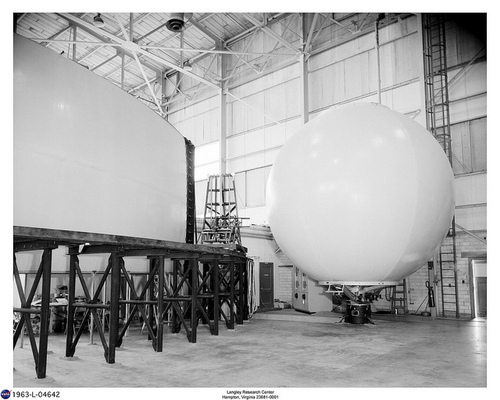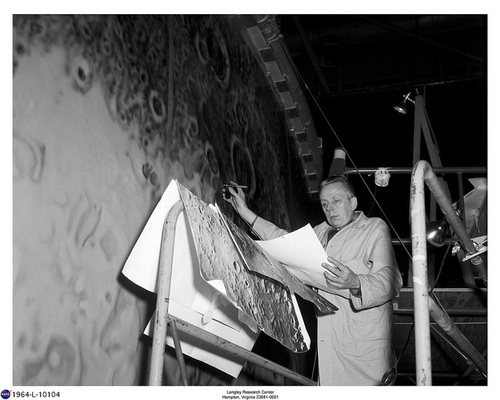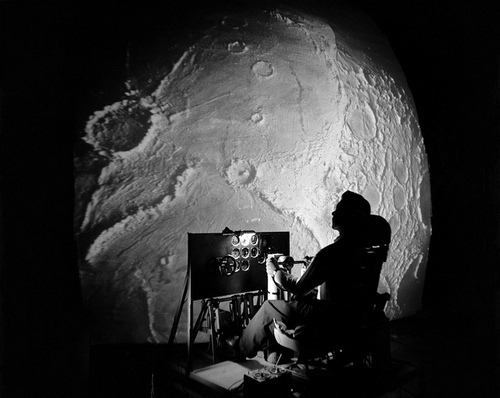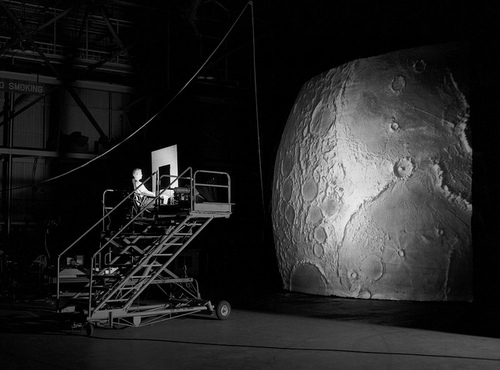sagansense:
Apollo’s Lunar Approach Simulator
China landed its...

A view of LOLA's Model 1 and Model 2 with a track system designed to support a moving TV camera to simulate a manned spacecraft passing over the lunar surface.

Artists used paintbrushes and airbrushes to recreate the lunar surface for each of the LOLA models that made up the simulator at Langley Research Center.

Artists used machined styrofoam to create highly accurate 3-D models of the moon's surface based on photographs.

Artist Compares Real Image with Recreation

Astronauts Neil Armstrong, Buzz Aldrin and Jim Lovell would have sat in this early simulator while they accustomed themselves to the surface of the moon.

During typical test runs, pilots sat in the cockpit for up to an hour watching the landscape go by. When the pilot started his descent to land, the cameras would take the pilot down to the surface.
Apollo’s Lunar Approach Simulator
China landed its unmanned Chang’e-3 spacecraft on the moon Dec. 14, making it the third nation to accomplish this monumentally technical feat.
It got us thinking about the beginning of efforts to reach and, ultimately, land humans on the moon. One part of those early efforts involved NASA’s Lunar Orbit and Landing Approach, a spaceflight simulator built at Langley Research Center in the 1960s.
The $2 million project was meant to train astronauts what their approach to the moon would be like and to learn problems they might encounter. The system was made of four scale models of portions of the lunar surface as they would appear at different altitudes, a cockpit with controls mounted on a gantry and a closed-circuit TV system.
Source: txchnologist



